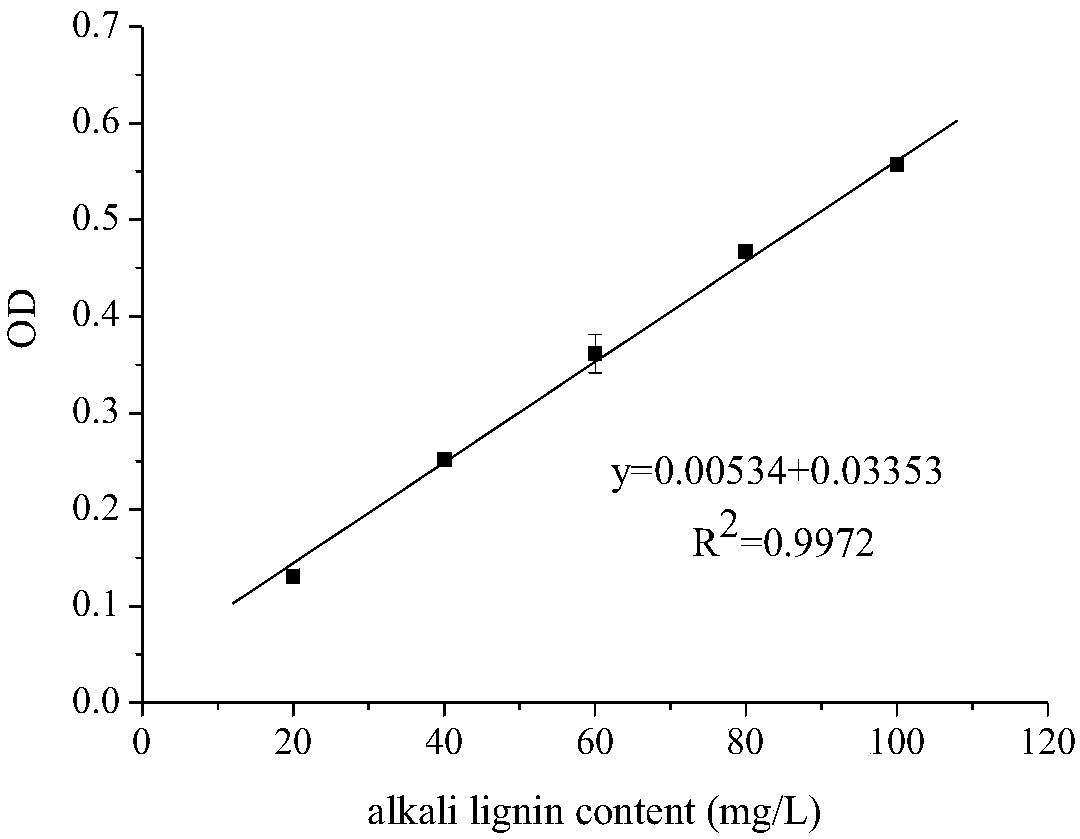Myrothecium verrucaria mutant strain T2901 and application thereof
A technology of verrucosia and mutant strains, applied in the field of microorganisms, can solve the problems of cellulose decline, carbohydrate loss, etc.
- Summary
- Abstract
- Description
- Claims
- Application Information
AI Technical Summary
Problems solved by technology
Method used
Image
Examples
Embodiment 1
[0017] Example 1 Isolation of bacterial strains
[0018] The soil in the forest area of Changbai Mountain Nature Reserve was collected, and 1g of soil samples were taken in a 250mL Erlenmeyer flask filled with 99mL of sterile water, and shaken on a constant temperature oscillator at 30°C and 120r / min for 45min. After standing still, take the supernatant, and dilute according to the gradient multiple, and then use the dilution coating plate method to dilute the dilution of 10 -6 ~10 -8 The supernatant was transferred to a PDA plate, each dilution was repeated three times, and cultured in a 29°C incubator. After the flora grew out, they were repeatedly streaked and separated on the PDA plate, and after observing under a microscope to confirm that they were pure single colonies, they were inoculated on the preservation medium for preservation.
Embodiment 2
[0019] Example 2 Screening and Identification of Bacterial Strains
[0020] (1) Morphological identification and screening
[0021] Inoculate the isolated Verrucous verrucosa strain on PDA solid medium. The mycelium of the strain presents white flocculent at first, and grows divergently towards the periphery. , the conidia initially appeared dark green, and after 8 days of culture, the color of the conidia continued to deepen, and glue spots appeared; after 10 days of culture, the colony was in the shape of concentric rings, the conidia showed black glue spots, and light spots appeared on the back of the colony. Brown radial folds.
[0022] Use a puncher to get a 1cm-diameter bacterial block, inoculate it on an aniline blue selective medium, and culture it in an aerobic incubator at 30°C for 10 days, observe the fading of aniline blue, and select a strain with a fast fading rate and strong ability as candidate strains.
[0023] At the same time, in order to directional scre...
Embodiment 3
[0031] Example 3 Mutation and screening of bacterial strains
[0032] The preparation of mutant strains mainly adopts the atmospheric pressure room temperature plasma mutagenesis (ARTP) method, and the specific process is as follows:
[0033]Place 3-5 glass beads on the surface of the colony, add 1 mL of sterile water to prepare a spore suspension. Then dilute and adjust the spore concentration to 10 7 / mL, take 10 μL of the diluted bacterial suspension and drop it on the ARTP slide for mutagenesis.
[0034] Irradiate with the ARTP mutagenesis breeding system at a distance of 4 mm, and irradiate for 0 s, 15 s, 30 s, 45 s, 60 s, 75 s, 90 s, and 120 s, respectively. Put the treated slides in a centrifuge tube filled with 1 mL of sterile water, shake After uniformity, dilute 10 -2 、10 -3 , 10 -4 、10 -5 、10 -6 、10 -7 6 gradients, each gradient coating 3 parallel, determine the optimal mutagenesis time is 75s.
[0035] Spread the diluted bacterial suspension evenly on the...
PUM
 Login to View More
Login to View More Abstract
Description
Claims
Application Information
 Login to View More
Login to View More - R&D
- Intellectual Property
- Life Sciences
- Materials
- Tech Scout
- Unparalleled Data Quality
- Higher Quality Content
- 60% Fewer Hallucinations
Browse by: Latest US Patents, China's latest patents, Technical Efficacy Thesaurus, Application Domain, Technology Topic, Popular Technical Reports.
© 2025 PatSnap. All rights reserved.Legal|Privacy policy|Modern Slavery Act Transparency Statement|Sitemap|About US| Contact US: help@patsnap.com


